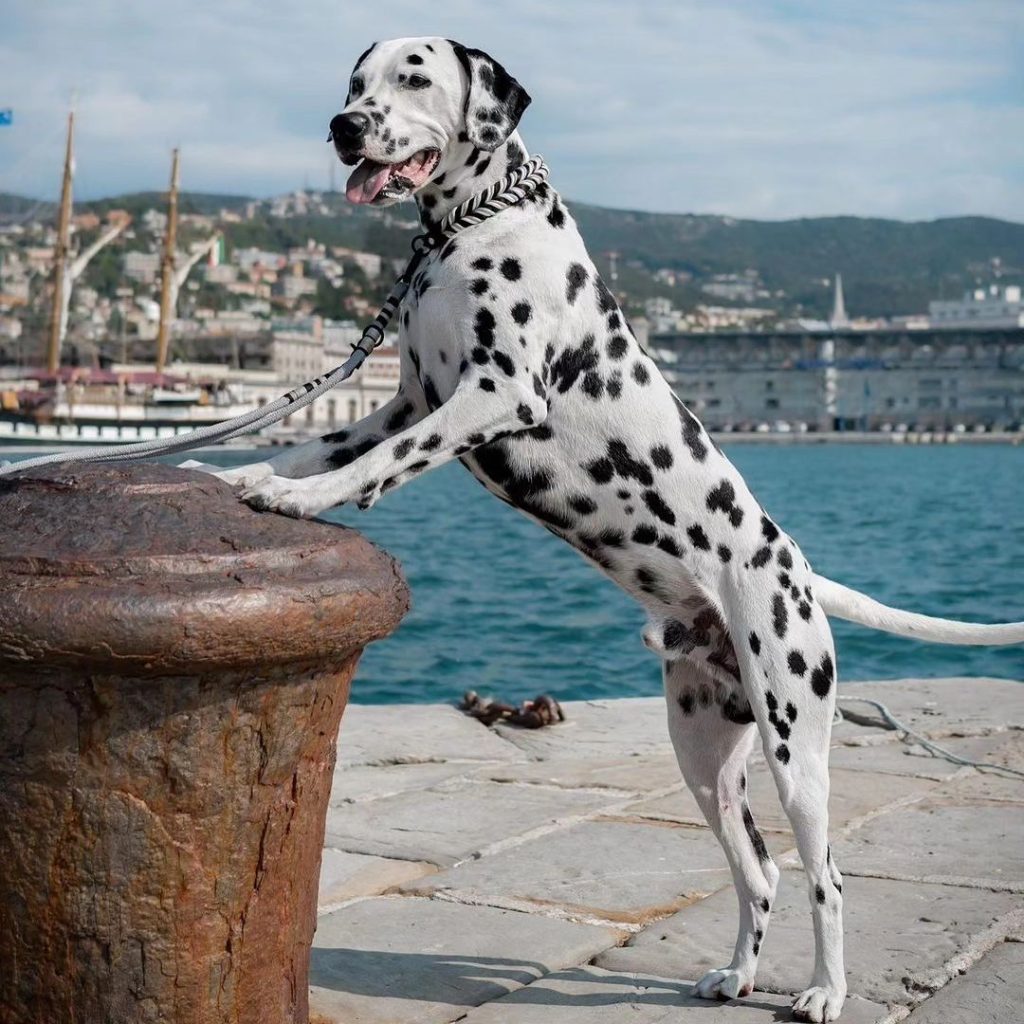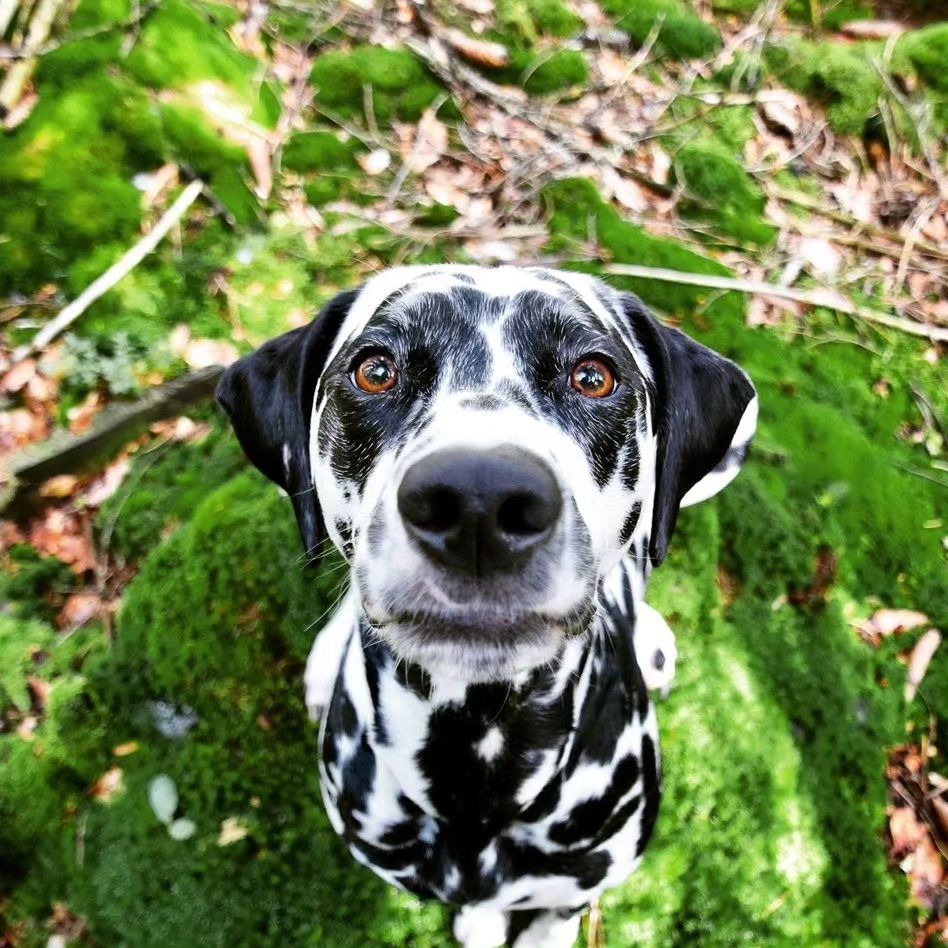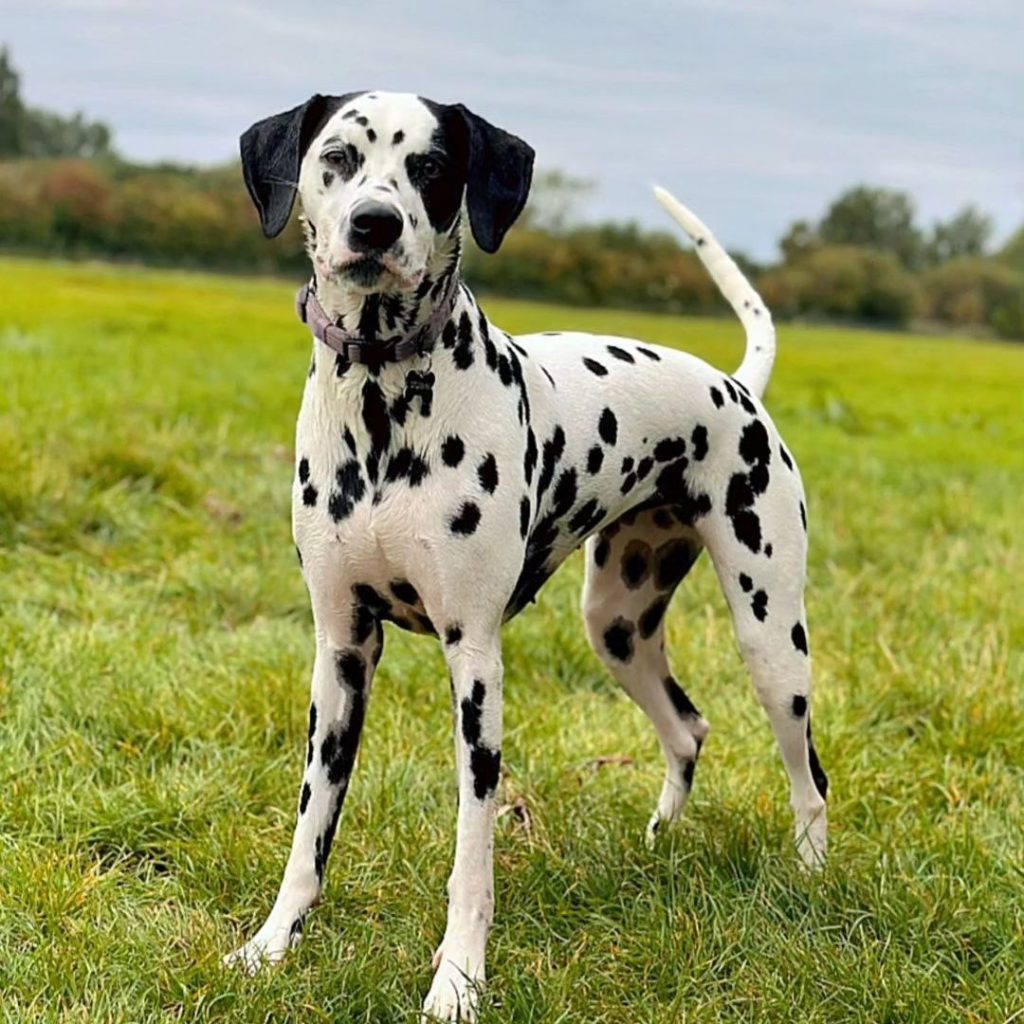Training a Dalmatian is a journey that combines understanding their unique characteristics with patience and consistency. Known for their striking spotted coats, Dalmatians are intelligent, energetic, and sensitive dogs. Originating as carriage dogs, they possess innate alertness and stamina. Early training, emphasizing socialization and positive reinforcement, is crucial to harness their potential and prevent unwanted behaviors. This article delves into effective coaching strategies, addressing common challenges, and nurturing a well-behaved and happy Dalmatian.

Introduction to Dalmatian Training
Overview of Dalmatian Characteristics
Dalmatians are a breed renowned not only for their distinctive spotted coats but also for their intelligence and energy. Originally bred as carriage dogs, they possess a strong, muscular build and enduring stamina. This breed’s history as working dogs is evident in their alert and active nature, making them well-suited for various tasks and challenges.
One of the most notable characteristics of Dalmatians is their intelligence. They are quick learners, capable of understanding and executing complex commands. However, this intelligence also means they require mental stimulation to prevent boredom and the development of unwanted behaviors.
Physically, Dalmatians are medium-sized dogs known for their endurance and speed. This physicality must be channeled through regular exercise and activities, which should be crucial to any training regime.
Their temperament is often friendly and outgoing, though they can be reserved with strangers. This trait makes them excellent family pets, but it also emphasizes the need for early socialization to ensure they are comfortable in various situations and with different people.
The Essence of Early Training
Beginning puppy training at an early age is crucial for Dalmatians. Their formative months are ideal for instilling basic commands and positive behaviors. Early coaching sets the foundation for future learning and behavior. It’s not just about teaching commands; it’s about socializing the puppy and getting them accustomed to various environments, sounds, and experiences.
Puppyhood is when your Dalmatian will be most receptive to new experiences. Introducing them to different people, animals, and environments can help prevent the development of fear or aggression. This period is also crucial for establishing boundaries and house rules, making future coaching sessions more straightforward and effective.
In summary, understanding the unique characteristics of Dalmatians is the first step in creating an effective training program. Their intelligence, physicality, and temperament must be considered to tailor a coaching approach that is both effective and enjoyable for the dog and the owner.
Establishing a Strong Foundation With Dalmatians

Cultivating Trust with Your Dalmatian
The cornerstone of any successful training program with a Dalmatian is trust. These dogs are not just pets but partners, and establishing a solid bond of trust is essential. This trust begins from the moment you bring your Dalmatian puppy home. Consistent, gentle handling and a calm, assertive demeanor help build this trust. Spending quality time with your Dalmatian is essential, as engaging in activities that both of you enjoy reinforces the bond and makes training sessions more effective.
Positive Experiences in Training
Training should be a positive experience for your Dalmatian. Use rewards like treats, praise, and play to encourage desired behaviors. Positive reinforcement makes training more enjoyable and strengthens the bond between you and your dog. Avoid harsh discipline, as it can breed fear and distrust, which are counterproductive to learning.
Engaging Your Dalmatian Puppy
Engaging your Dalmatian puppy in training involves more than teaching commands; it’s about making learning fun and stimulating. Incorporate training into everyday activities and play. This approach keeps your puppy engaged and eager to learn, providing mental stimulation as important as physical exercise.
Routine and Consistency in Training
Dalmatians thrive on routine and consistency. A regular coaching schedule helps your puppy understand what to expect and when. Consistency in commands, rewards, and discipline helps reinforce learning and behavior. Remember, a Dalmatian’s intelligence means they can quickly pick up on inconsistencies, leading to confusion and hindering coaching progress.
Common Training Challenges
Navigating Early Mistakes
Training a Dalmatian, like any dog, involves navigating through a series of inevitable mistakes from the puppy and the trainer. Common early mistakes include:
- Inconsistent Commands: Using different words for the same command can confuse your Dalmatian. Consistency is key.
- Overlooking Socialization: Failing to expose your puppy to different environments and people can lead to social anxiety or aggression.
- Delayed Correction: Timing is crucial in training. Delayed correction for unwanted behavior can be ineffective as the dog might not associate the correction with the behavior.
Addressing Unwanted Behaviors
Unwanted behaviors such as jumping, excessive barking, or chewing can be challenging but are manageable with the right approach:
- Preventive Strategies: Use strategies to prevent the behavior before it becomes a habit.
- Positive Reinforcement: Reinforce the behaviors you want to encourage while ignoring or redirecting unwanted behaviors.
- Consistent Boundaries: Set and maintain clear boundaries. Inconsistency can reinforce negative behaviors.
Understanding Canine Psychology
Understanding the basic principles of canine psychology helps in addressing training challenges. Recognize that:
- Dogs Learn Differently: Unlike humans, dogs learn through immediate consequences and associative experiences.
- Body Language is Key: Dogs are often more responsive to body language than verbal commands.
Correcting Excessive Barking and Aggression
Excessive barking and aggression are common issues that require specific strategies:
- Identify Triggers: Understand what triggers these behaviors. Is it fear, territorial instincts, or excitement?
- Redirect Attention: Redirect your Dalmatian’s attention away from the triggers.
- Consistent Training: Use consistent commands and rewards to teach alternative behaviors.
Training Techniques for Your Dalmatian

Starting Training at a Young Age
Begin training your Dalmatian as early as possible. Puppies are more receptive to learning, and early training lays the groundwork for future behavior. Focus on simple commands like ‘sit,’ ‘stay,’ and ‘come.’ Frequent training sessions are more effective for young puppies, keeping their attention without overwhelming them.
Emphasizing Positive Reinforcement
Positive reinforcement is a powerful tool in Dalmatian training. This method involves rewarding desired behavior and encouraging the dog to repeat it. Rewards can be treats, praise, or playtime. Remember:
- Immediate Rewards: Give rewards immediately after the desired behavior to reinforce the connection.
- Variety in Rewards: Keep your Dalmatian motivated by varying rewards.
Mastering Basic Commands
Basic commands form the foundation of your Dalmatian’s training. Consistency in command words and actions is crucial. Repeat these commands regularly and in different settings to ensure your Dalmatian understands and follows them. Key commands include:
- Sit: Teaches patience and control.
- Stay: Develops discipline and focus.
- Come: Essential for recall and safety.
- Heel: Important for controlled walking.
The Importance of Socialization
Socialization is integral to a well-rounded Dalmatian. It involves exposing your dog to various people, animals, environments, and experiences. Proper socialization reduces fear and aggression, making your dog more adaptable and confident. Gradually introduce new experiences, constantly monitoring your Dalmatian’s reactions and comfort level.
Advanced Training Concepts

Leadership and Obedience Training
As your Dalmatian progresses from basic training, it’s time to introduce more advanced concepts, focusing on leadership and obedience. Leadership in dog training isn’t about being dominant or forceful; instead, it’s about guiding and making decisions for your dog. Establish yourself as a leader through consistent, confident commands and behavior. This leadership helps your Dalmatian feel secure and understand their role within your family structure.
Obedience training at this stage goes beyond the basic commands. It involves teaching your Dalmatian to follow commands under various distractions and in different environments. This training is crucial for their safety and your peace of mind. It includes complex commands like ‘leave it,’ ‘wait’ at doors, or ‘quiet’ when barking excessively. These commands are not just about control but also about teaching your Dalmatian self-restraint and patience.
Effective Leash Training
Leash training is another critical aspect of advanced training. A well-trained Dalmatian should walk beside you without pulling, lunging, or getting distracted. This training starts with choosing the correct harness and leash. A harness that fits well ensures comfort for your dog and better control for you. Start with short walks, gradually increasing the duration as your Dalmatian gets used to the leash.
During leash training, maintain a firm yet gentle hold. Use positive reinforcement to encourage good behavior. If your Dalmatian pulls or gets distracted, stop walking and call them back to your side before continuing. The goal is to teach them that walking calmly results in continued walks and enjoyment.
Utilizing Tools like Whistles
Advanced training can also incorporate tools like whistles. Whistle training can be efficient for recall and distance commands. The sound of a whistle carries farther than a voice, making it useful in parks or large outdoor spaces. Start by associating the whistle with positive experiences, like feeding or playtime. Gradually introduce whistle commands, using consistent patterns (e.g., one short blast for ‘come,’ two blasts for ‘sit’). Always reward your Dalmatian when they respond correctly, reinforcing the connection between the whistle and the desired behavior.
Training a Dalmatian to a high level requires patience, consistency, and understanding. Every dog learns at their own pace, and it’s essential to recognize and adapt to your Dalmatian’s individual needs. Advanced training improves behavior and enhances the bond between you and your dog. It’s a rewarding journey that offers both challenges and immense satisfaction.
Remember, advanced training aims not just to have a dog that follows commands but to foster a deeper understanding and communication between you and your Dalmatian. It’s about developing mutual respect and a strong, lasting bond.
The Journey of Dalmatian Training
Training a Dalmatian is a multi-faceted journey that evolves. It’s not just about teaching commands or correcting behaviors; it’s about building a deep, communicative relationship between you and your dog. This journey involves learning, growth, challenges, and immense rewards.
Patience and Consistency in Training
Patience is the bedrock of practical dog training. With their high intelligence and energy, Dalmatians can sometimes be a challenge to train. They may pick up some commands quickly but need help with others. It’s crucial to maintain patience and understand that progress might be gradual. Celebrate the small victories along the way, as these incremental successes are stepping stones to a well-trained dog.
Consistency is equally important. Dogs thrive on predictability, and a consistent approach to training helps reinforce learning. This means consistent commands, rewards, and responses to behaviors. Your Dalmatian might need clarification if you’re consistent, making training more challenging. A routine not only aids in training but also provides a sense of security for your dog.
Bonding Through Training and Play
Training should be an enjoyable experience for both you and your Dalmatian. Integrating play into training sessions can enhance learning and make it more engaging. For instance, use a game of fetch to reinforce the ‘come’ command or hide-and-seek to practice ‘stay.’ This integration of fun and learning strengthens your bond and makes your Dalmatian eager to participate in training sessions.
Remember, bonding is not just about spending time together but also about quality interactions. Your Dalmatian doesn’t just need your time; they need your attention and engagement. This bonding is fundamental to building trust, the cornerstone of any successful training program.
Celebrating Progress and Milestones
Each milestone in your Dalmatian’s training journey deserves celebration. Whether mastering a new command, successfully interacting with a new dog, or remaining calm in a previously stressful situation, acknowledging these achievements reinforces positive behavior. Celebrations can be as simple as extra playtime, a special treat, or verbal praise. These positive reinforcements not only encourage your Dalmatian but also strengthen the emotional connection between you.
Training a Dalmatian is a dynamic process that adapts and changes as your dog grows and learns. It’s about understanding your dog’s unique personality, strengths, and challenges. As you progress, you’ll learn as much about yourself as you do about your dog. The patience, communication skills, and empathy you develop during this journey are invaluable.
Ultimately, the journey of training your Dalmatian is about more than just obedience or behavior. It’s about creating a harmonious and mutually respectful relationship. It’s a journey that enhances your lives, bringing joy, companionship, and a deeper understanding of the unique bond between humans and dogs.

Conclusion
In conclusion, training a Dalmatian is a rewarding endeavor that extends beyond basic obedience to encompass a journey of mutual growth and understanding. It’s about cultivating a bond based on trust, respect, and communication. This journey requires patience, consistency, and a deep understanding of your Dalmatian’s unique personality and needs.
As you embark on this journey, remember that each Dalmatian is an individual with their quirks and learning styles. Tailoring your approach to suit your dog’s temperament and responding to their specific needs will make the training process more effective and enjoyable for both of you.
The journey of training your Dalmatian is not measured solely by the mastery of commands or the correction of behaviors but by the depth of the bond you forge and the joy you derive from the process. It’s a path filled with challenges, learning, and immense satisfaction. Embrace this journey, and you will have a well-trained Dalmatian and a loyal and loving companion for life.
